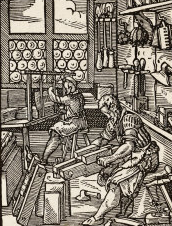Radiophonic Transference in Antonin Artaud’s Pour en finir avec le jugement de dieu
Abstract
This article explains how Artaud constructs a field of radiophonic transference to reconstitute the body beyond its destruction by language. We situate our argument at the level of the unconscious, or at the level of the artwork considered through its conditions of possibility. A close reading of the text of the radio play emphasizes the dissonant elements of language at work (glossolalia, screams, cacophony, etc.) as well as the thematization of jouissance. We also give attention to the way radio-voice is used to enact one of Artaud’s leitmotifs: disincarnation. He theorized a disincarnation that contains the body, and, by attributing the body’s material and affective force to its separation from itself, he was able to challenge the metaphysical connotations attached to radio. Artaud’s central concern–lived as a constant psychic threat–that language, as a medium, produces the body as a dead body, as a mere effect of language, reappears in radio as a problem of how to express the body in a seemingly bodiless medium. Artaud’s search for the body doesn’t lead him somewhere “beyond” language, outside of the field of signification where pure affects could be located. Rather, it leads him somewhere deep within it, where the body is reconstituted in relation, as Artaud points out, to both the infini and the infime.
Downloads
Published
Issue
Section
License
- Work submitted for publication must be original, previously unpublished, and not under consideration for publication elsewhere. If previously published figures, tables, or parts of text are to be included, the copyright-holder's permission must have been obtained prior to submission.
- Authors of accepted manuscripts will assign to L'Atelier the right to electronically distribute their article, or publish it in any form (Internet, CD ROM, printed copy) but authors will retain copyright and, after the article has appeared in L'Atelier, authors may republish their text (in print and/or electronic form) as long as they clearly acknowledge L'Atelier as the original publisher.


